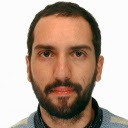The wide adoption of Cloud Computing architectures for distributed computing, big-data solutions, Service-Oriented Architectures (SOA) and the availability of highly scalable and resilient core hardware, have enabled developers and consumers to access a wide range of services and computational resources through a pay-per-use model.
Additionally, the ever-increasing demand is forcing vendors to provide a higher level of assurance for their services and optimize the allocation of their resources to efficiently meet the web-scale demand of today's computing landscape.
As a consequence, computing, management, and provisioning models must evolve to address the increasing complexity in today's distributed data centers. New unified computing theories and implementations are needed to address the resilience, security and efficiency of global web-scale services.
Different major problems arise with the current generation of virtualization technologies and the distributed environment where multiple owners provide a heterogeneous and rapidly evolving infrastructure. Furthermore, the increasing concerns on privacy and security of data lead to the definition of special regulations (as the GDPR) to protect end-users. As a result, the existing architectures must be adapted to cope with these new requirements, or new architectures that focus on smarter and resource-agnostic services must be defined.
Traditional computing elements, frameworks, middleware, and models used by scientists and business analysts would greatly benefit from the integration into a unified computing framework. Previously, this conference followed a path into self-managing workloads in multi-cloud infrastructures, and is now focusing on high-performance, low-latency and secure cloud edge architectures, bringing computing closer to data sources and consumers.
CDCGM's goal is to attract young researchers, PhD students. students, professionals and business leaders to make contributions in the area of distributed clouds, the grid and their management, in particular in the development of models, technologies, frameworks and middleware to improve processing, management, security and programming techniques.
Since the start of the CDCGM path in 2009, participants have contributed to new computer models and demonstrated many applications of emerging technologies to improve the resilience, scalability and efficiency of information processing and network systems.
The new decade promises more advances in our understanding of post-Church-Turing thesis computing, application of distributed self-managing edge clouds, and a path toward strong AI that goes beyond deep learning. The 2022 CDCGM track provides an opportunity to present your contributions and shape the future of IT as we know it.


